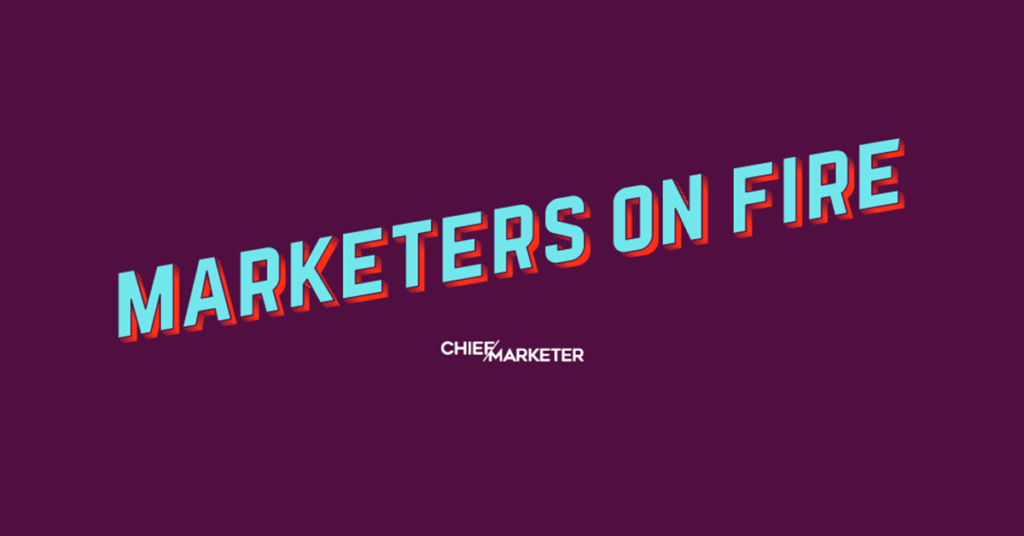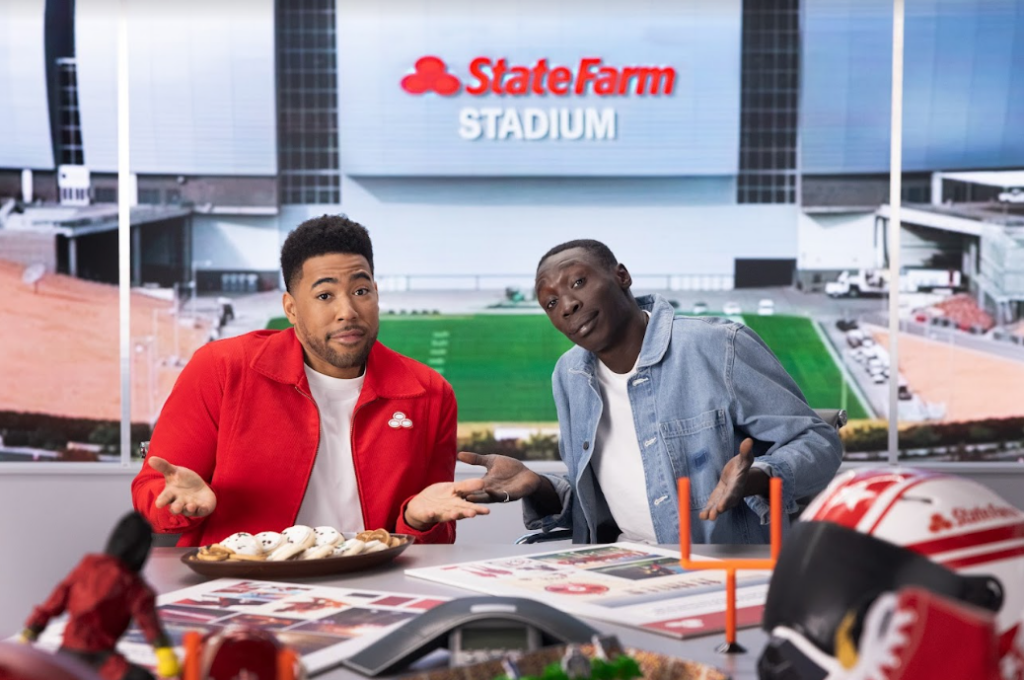State Farm decided not to shell out $7 million or so for a commercial during the Super Bowl this year, instead opting for pre-game, in-game and post-game engagement tactics surrounding a TikTok challenge launched by creator Khaby Lame to his 154 million followers.
The ask was simple: Guess how many times State Farm Stadium would be mentioned during the Big Game broadcast for a chance to be featured in a post with him. A cool 220 million views and 18K comments later… and touchdown.
The campaign’s holistic approach represents the brand’s digital- and social-first strategy, according to its newly-minted CMO Kristyn Cook. “Given the naming rights of the stadium, we had an opportunity to step back, to think differently, and support our journey into modernizing what we do from both an advertising landscape and looking at non-traditional ways to reach consumers, especially the younger generations,” she says.
We chatted with Cook about how the brand is engaging with younger consumers, evolving its approach within the gaming space, achieving reach and connecting through music in the metaverse and supporting local communities through philanthropic initiatives.

Chief Marketer: What was the motivation for the TikTok-based campaign you created with Infinity Marketing Team this Super Bowl?
Kristyn Cook, CMO of State Farm: Given the naming rights of the stadium, we had an opportunity to step back, to think differently, and support our journey into modernizing what we do from both an advertising landscape and looking at non-traditional ways to reach consumers, especially the younger generations. The holistic aspect of the stadium on game day, how we engaged fans before, during and then after, was a significant success. Khaby Lame’s 154 million fans really helped propel us forward, combined with Jake from State Farm, who is a part of that cultural lexicon from a TikTok standpoint, and engaging other influencers. For us, it was, how do we continue to test and learn and find new ways to reach people? We’ve reached hundreds of millions of fans, not just during the broadcast, but prior to that, too. There’s a lot of good building blocks for what we will continue to test in the future.
Chief Marketer: You’ve done commercials during the Super Bowl in the past, with much success. Why go with a largely digital campaign?
KC: We’re proud of the work that we’ve done in the past. Most notably, a couple years ago when we had a commercial in the Super Bowl perform really well with “Drake from State Farm.” We’ll continue to look for ways that are relevant to what we’re trying to accomplish. This time, the guidepost for us was that we really wanted to lean into our naming rights, and we knew that State Farm Stadium in particular would provide us this venue to bring together family, friends and good neighbors on the most-watched broadcasts out there. We knew we had that, and we knew that it would be a multitude of generations tuning in.
This supports where we’re going in terms of a digital- and social-first approach. We took some learnings from last year with TikTok, but we combined it into more of an ecosystem. Prior to the game, we had this warmup “shrug” TikTok with Khaby and Jake to [generate] interest. But then leading up to that, we also engaged other influencers on TikTok that had significant reach as well. We also had Jake from State Farm out on the ground in the local community. So, there’s multiple ways to drive engagement. We believe that this was much stronger approach than just doing an ad in the Super Bowl, given all the components and some of the results that we’re seeing.
CM: What are the other ways that you’re connecting with younger generations?
KC: Our goal is to leverage the power of this brand to impact customers and communities. There are so many opportunities to leverage that iconic phrase, “Like a good neighbor, State Farm is there.” Millennials and Gen Z continue to be crucial to our future growth. We’re taking deliberate steps to ensure our brand is relevant. Jake from State Farm has been incredibly successful. He’s now part of the cultural lexicon; he’s the “good neighbor.” We’ll continue to focus on social- and digital-first and meet customers where they are on those platforms.
From an innovation standpoint, we’re trying to continue to be first movers in gaming. We’ve had a lot of success with the “gamerhood,” where we leverage and partner with some of the biggest influencers and with Jake from State Farm. We’re on Roblox as well, taking steps into the metaverse and partnering with iHeartMedia. And then we’re continuing to work with our sports platform. This brand is synonymous with sports. [For example,] the Super Bowl, the All-Star game and Jake seamlessly existing in NBA 2K.
CM: What are your opportunities for growth in the coming year?
KC: We’ll take these learnings relative to the Super Bowl and blend the physical and the digital world together to amplify our presence moving forward. But everything that we do is centered around the customer and being rigorous around audience centricity in particular, from the insights that help shape the storytelling and the narrative we put out there. We know for our brand in particular, and others in this category, price is really important, and especially given the macro environment with inflation.
In addition, the ease of doing business with us, the experience, really matters. The power of being good neighbors, and not to mention the 19,000-plus agents who live, work, play and give back in their local communities. Telling that story is very unique to our brand. Also, the evolution of Jake from State Farm in the cultural lexicon.
And then, delivering best-in-class sports marketing. How do we continue to be there at those culturally relevant moments, and how do we also think about some of the emergence around that and elevate women’s sports as well? When you think about reflecting the diversity of customers we serve, there are business outcomes there as well. The community aspect of what we do is really important, too. We leverage our agents and empower them, so that amplifies the brand.
CM: What is your experiential strategy for the coming year? Will you continue to focus on virtual events as well as in-person?
KC: I think it’s both, and based on what we’re trying to accomplish. We have a strategy that’s been really successful for us called Good Neighbor Crews, essentially young people representing the brand in different marketplaces. It may be the intersection with festivals, music events or sport events, where they bring our brand to life. You’re seeing consumers value more experiences, travel and music. So, it’s how we show up and create relevance where the audience is in unexpected ways, in places where we know people spend time. We’ll continue to evolve our gaming approach and lean into our metaverse strategy, with augmented reality and using NFTs.






